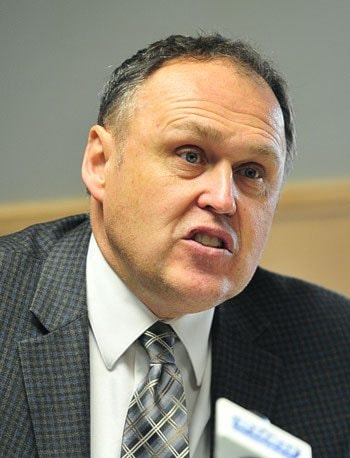The Yukon is going to be getting back most of the $23-million transfer payment shortfall announced just before Christmas.
On Tuesday, Federal Finance Minister Bill Morneau announced that the government will make legislative amendments to restore $16.5 million to the Yukon and a total of $67 million to the three territories.
Yukon MP Larry Bagnell and Premier Darrell Pasloski were both quick to take credit for the change.
“We’ve been working hard on this,” said Bagnell. “It’s a pretty exciting day for the territories.”
Pasloski, who is also the territory’s finance minister, said he’s had three face-to-face meetings with Morneau and one meeting with Prime Minister Justin Trudeau to discuss the issue.
But he was careful not to sound too pleased with the Liberal government’s solution.
“A cut is a cut,” he said. “While I’m certainly pleased that there’s a partial restoration to the cut, we’re still looking at a shortfall of about $6.5 million.”
In December, it was revealed that Statistics Canada had made changes to the way it measures spending, to bring Canada in line with international standards. Those data are used by Finance Canada when it calculates the territorial transfers each year, and the methodology changes inadvertently cut $88 million from the amount the three territories expected to receive in 2016-17.
The Yukon’s transfer payment would still have increased to $930 million from the 2015-16 total of $923 million. But that’s $23 million less than the $953 million the government was expecting.
With the new changes, the Yukon will receive about $947 million.
The reason the transfer payments weren’t fully restored has to do with how the problem was fixed. Traditionally, the amount transferred to the territories was based partly on provincial and local government spending from the three most recent years. When those numbers drop, the transfer payments also decline, because the territories shouldn’t need to spend as much to keep up with the provinces.
But it’s those numbers that have decreased because of the Statistics Canada changes. So now, Finance Canada is only using the current year’s spending data, instead of all three.
The current year’s data have still been revised downward by the methodology changes. As a result, the total transfer is still less than it would have been, but not by nearly as much. This method will continue to be used in future years.
Tim Shoniker, director of fiscal relations for the Yukon Department of Finance, said it would have been possible to fully restore the transfer if the federal government had decided to use data available from last September, before the Statistics Canada changes. He wouldn’t say whether he felt that should have been done.
“Obviously, Premier Pasloski feels that it’s still a cut and it should have been fully restored,” he said.
Looking ahead, Shoniker said the transfer payment will likely continue to increase, but at a low rate. That’s because provincial and local spending across Canada is expected to stay relatively low.
Peter Turner, president of the Yukon Chamber of Commerce, said the announcement is “good news for the North as a whole.”
But he cautioned that the issue should serve as “a wake-up call to us as Yukoners that we should be less reliant on transfer payments.”
Turner said the Yukon needs to put more emphasis on growing and diversifying the private sector.
“At the moment ... tourism and mining are basically the primary drivers of the private sector. I think we need to be looking in the IT space. I think we need to be looking at the amount of exporting we do.”
However, he acknowledged that the current economic situation may make any attempt to grow the Yukon’s private sector “an uphill slog.”
Contact Maura Forrest at
maura.forrest@yukon-news.com
